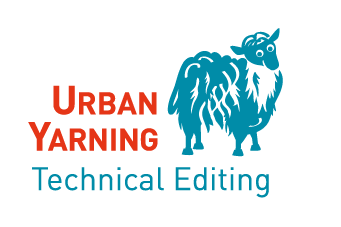Hi there,
if you are anything like me, you have quite a few plans in the back of your head or noted down somewhere.
But with our busy lives it isn’t easy to find the time and motivation to work on those plans.
I think I know what you’re thinking: “Oh no, somebody else to talk about productivity and how to achieve your goals. I can’t hear it anymore.”
But fear not, my friend, far from it, I just want to talk about something which gets me moving ahead with those plans “for when I have time“ (as if!).
It’s laziness or better convenience:
After last month’s newsletter, I was asked for the first instalment of that very short series of book reviews. And because I had looked it up and sent it to quite a few new designers I started working with lately, I thought: “That’s it! It’s time for the newsletter archive on my website“.
It was a public holiday here in Germany and I used the time to upload all useful and/ or entertaining newsletters of 2018 to my website. Last week I added the highlights of 2019’s newsletters (I had forgotten that there were that many which fitted the above description).
I had planned that for a long time. I put time and effort in my newsletters so I wanted to store them somewhere people can go and read them and where I can send people to find specific information I already covered in a newsletter.
So this newsletter contains “real“ news this month ;-) Everything older than 6 months will be there - it has to be advantageous for you to be on my list after all :-)
Yay for chipping away on big plans!
Another thing I repeatedly write regards pattern writing.
So, unto today’s topic:
On writing repeats - which I want to avoid so this will be in a newsletter and later in the archive, so I can re-sent this or point designers to my website ;-)
There are quite a lot of methods how to write repeats in knitting patterns. I selected a few which should cover most types of repeats you need.
Let’s talk about the word “repeat“ first. Some people understand it to mean that you have an instruction and then do it for another / a further x times, so you have 1 + x rows / rounds in total. Other people understand it to mean that the first instruction is included in the number of times it is worked, so you have 1 + x-1 rows / rounds in total.
This is a bit of a philosophical question and my stance is that you can only repeat something which is already there, so I’m in camp 1 + x rows / rounds. I won’t start discussing this with you though.
I highly recommend either giving the total amount of rows / rounds you want to have worked as well, or an added “another“ or “a further“ like I did above, so the knitter will understand what you mean by “repeat“.
Now to the different types of repeats:
The easiest type of repeat is to repeat a whole row or round, obviously. This is simple:
Row 1 / Round 1: K47, p3, k2tog, k1, ssk, p3, k47.
Repeat Row 1 / Round 1 another x times for a total of y times.
Naturally, it works accordingly if more than 1 round / row is to be repeated.
2. For something to be repeated for a whole row or round l like the use of parentheses around the instruction like this:
Row 1 / Round 1: (K47, p3, k2tog, k1, ssk, p3, k47) to end of row / round OR across / around.
Another simple example is ribbing:
Row 1 / Round 1: (K2, p2) to end of row / round OR across / around.
3. I recommend using parentheses as well for instances where part of a row / round instruction should be repeated for a certain number of times, like this
Row 1 / Round 1: K47, p3, (k2tog, k1, ssk) twice, p3, k47.
4. If only part of a row / round instruction is to be repeated to a specific point, I recommend using the asterisk like this:
Row 1 / Round 1: K47, p3, *k2tog, k1, ssk; repeat from * to marker, slm, p3, k47.
As an aside: Obviously, I could have written that instruction without a marker like this:
Row 1 / Round 1: K47, p3, *k2tog, k1, ssk; repeat from * to 50 sts before end of row / round, p3, k47.
I don’t recommend that because it’s not knitter-friendly: who wants to count that many stitches at the end of the row / round? I don’t.
But you can write it like that, if it’s only a few stitches which you can see without actively counting - not more than 3 stitches, I’d say though.
You can find it written like this too:
Row 1 / Round 1: K47, p3, *k2tog, k1, ssk*; repeat from * to * to marker, slm, p3, k47.
I don’t recommend that at all! The same symbol is used for the start and the end of the phrase to be repeated. That can make it difficult for the knitter to see where they are and what the repeated bit is, especially when it comes to more complex instructions.
5. For more complex instructions you can put all of the above together and use different types of brackets to make it easy to spot.
Row 1 / Round 1: K47, [p3, *k2tog, (k1, ssk) 3 times; repeat from * to marker, slm, p3] twice, k47.
I hope this is useful for you! And I hope I don’t see too many double asterisks in the future ;-)
Did I forget a type of repeat?
Talk soon,
Frauke x
